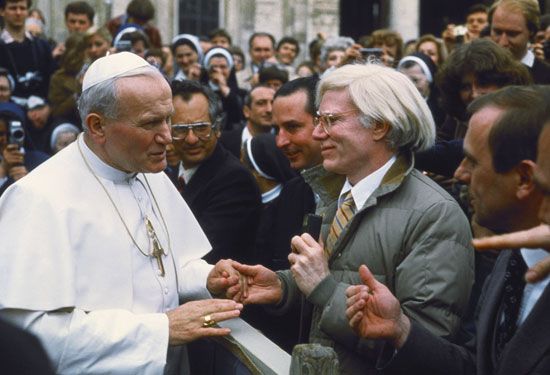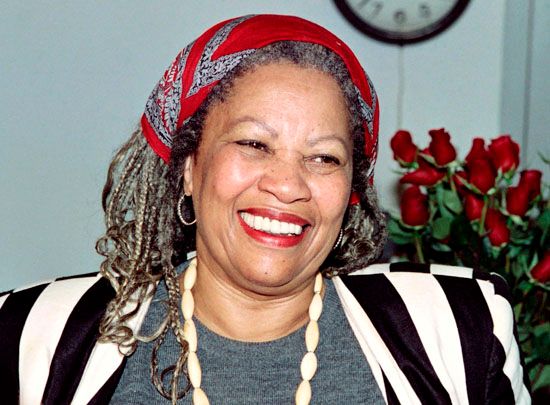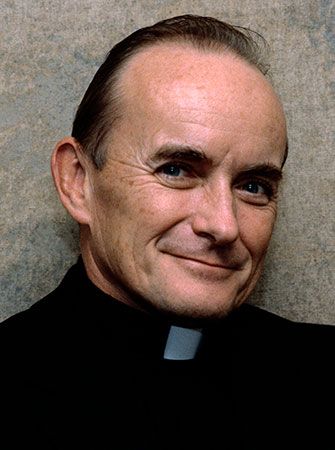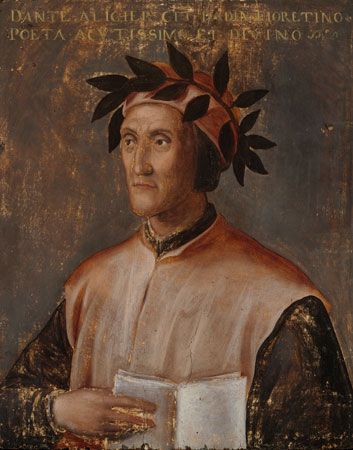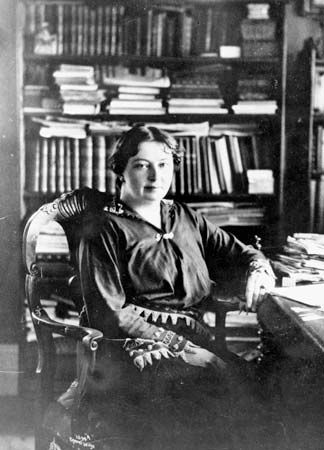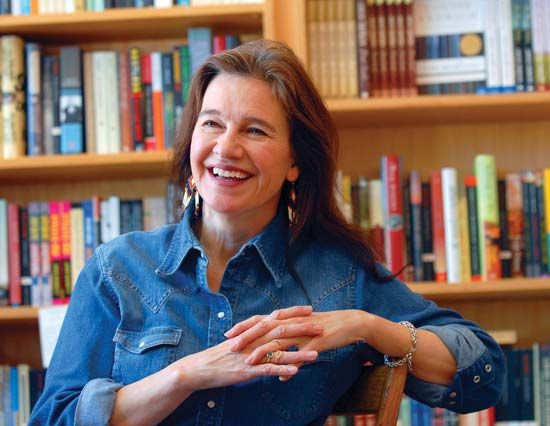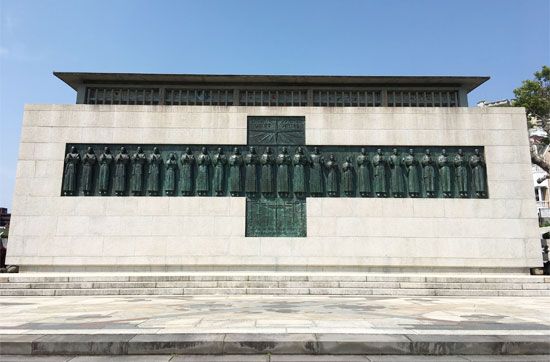Catholic imagination
Our editors will review what you’ve submitted and determine whether to revise the article.
Catholic imagination, a cultural and aesthetic tradition across art forms in which storytelling and creative expression are influenced by Roman Catholic theology and belief. Works of the Catholic imagination might depict Catholic characters and cultures, but they are not exclusive to those subjects. Rather, the Catholic imagination is characterized by an incarnational and sacramental vision of the world—that is, a vision that conveys an embodied sense of God. The Catholic imagination is most notable in literature but is also significant in visual art and film.
Overview of the Catholic imagination
According to Christian doctrine, the Incarnation is the moment when God became flesh in the person of Jesus Christ. For many Catholic artists, the Incarnation centers the physical body in storytelling and creative expression as a source of both sacred and profane action. As novelist Toni Morrison described, Catholicism is a religion of the crucifix, not merely of the cross, in which the suffering body of Christ is visible and palpable. In a conversation with philosopher Cornel West at The Nation Institute in 2004, Morrison stated:
[We Catholics are] used to blood and gore. On the cross in the church, there’s the body, with the cuts and the bruises. Protestant churches: nice, clean cross. No body at all.
Additionally, the Catholic imagination envisions a sacramental world, experienced through the seven sacraments of the Catholic Church. Sociologist, author, and priest Andrew Greeley called this sacramental idea of the world “a revelation of the presence of God.” Writers such as Andre Dubus, however, have imagined the range of sacramental experiences to include ordinary actions—for example, a parent making sandwiches for their children. In his essay “Sacraments” (1998) Dubus wrote that sacraments are “myriad” and not something that “occur only in churches, or when someone comes to us in a hospital or at home and anoints our brows and eyes and ears, our noses and lips, hearts and hands and feet.”
Subjects of the Catholic imagination span the ecclesiastic and domestic, including but not limited to allegorical depictions of Christ and the Gospels; Marian devotion (i.e., veneration of the Virgin Mary); scenes of mass, Catholic schooling, and parish life; suffering and grace; iconography of saints; and devotional practices. In the Catholic imagination evil is real and sin is significant; both are an inevitable part of human existence and a source of moral consideration, causing artists to ponder guilt in ways that can be altogether earnest and ironic.
In The Analogical Imagination: Christian Theology and the Culture of Pluralism (1981), theologian and priest David Tracy discusses an analogical understanding of theology that draws upon a range of Christian symbols and a dialectical theology that focuses on the redemptive necessity of God becoming flesh as Jesus Christ. In his book The Catholic Imagination (2000), Greeley interprets Tracy’s comparison to argue that the incarnational and sacramental nature of the Catholic imagination leads Catholic artists to consider God’s presence in the world, whereas the Protestant imagination might more often consider God’s absence.
Greeley further uses Tracy’s observation to contrast the opera Peter Grimes (1945) by Benjamin Britten (an English Protestant) with La traviata (1853) by Giuseppe Verdi (an Italian Catholic). Greeley argues that while in Britten’s work, “there is no salvation for anyone at the end of the opera, no hint of hope,” in Verdi’s work there are “stories of salvation, of tragedy and hope, of the grace that is pervasive even in grief.” Although Verdi was not particularly pious, his sensibility is deeply Catholic. In fact, the Catholic imagination has varying degrees of piety and orthodoxy; some artists closely hew to traditional beliefs and devotional practices, while others create subversive works that retain Catholic culture, iconography, and symbolism.
In the 21st century the Catholic imagination has been the subject of numerous conferences and events at which artists, theologians, clergy, and scholars have come together to discuss the role of Catholicism and faith in the arts and media, from Dante’s The Divine Comedy (c. 1308–21) to Phoebe Waller-Bridge’s Fleabag (2016–19). Among the notable speakers at such events have been Pope Francis; Jesuit priest, writer, and editor James Martin; filmmakers Martin Scorsese and Paul Schrader; and writers Tobias Wolff, Phil Klay, Dana Gioia, Mary Gordon, Christopher Beha, Richard Rodriguez, Ron Hansen, Fanny Howe, Kirstin Valdez Quade, and Alice McDermott.
Catholic imagination in literature
The Catholic imagination in literature is characterized by shared themes and concerns. Because of their incarnational vision of the world, Catholic writers readily depict both sinners and saints.
As might be expected, the Catholic imagination was formative in many works of European literature before and immediately following the Protestant Reformation. A prime example is the role of faith in Dante Alighieri’s poem The Divine Comedy, offering a theological foundation to Dante’s conception of the afterlife, in particular Hell (Inferno). In the 16th century, Spanish Carmelite monk St. John of the Cross penned the poem “The Dark Night of the Soul,” which is imbued with an intense Catholic mysticism. In the same century French philosopher Michel de Montaigne’s omnivorous essays were informed by a Catholic sensibility. For example, in his longest essay, “An Apology for Raimond Sebond” (1576), Montaigne writes a spirited defense of the titular Catalan theologian. Sebond’s 15th-century book Natural Theology (which Montaigne had translated into French) was controversial, in part because Sebond affirmed the significance of human reason. Some Christians took offense to the valorization of reason, but Montaigne rebukes such readers and, along the way, writes quite lyrically about faith:
If we hold upon God by the mediation of a lively faith; if we hold upon God by him, and not by us; if we had a divine basis and foundation, human occasions would not have the power to shake us as they do; our fortress would not surrender to so weak a battery…we should withstand the fury of these waves with an immovable and unyielding constancy.
In the pluralism of the 19th century, Catholic writers approached theological themes from stylistically different but culturally similar angles. French poet Charles Baudelaire’s Les Fleurs du mal (1857; The Flowers of Evil) reveals his wrangling with Catholic visions of evil, the devil, and desire. French novelist Gustave Flaubert spent more than 30 years on what he called “the work of my entire life,” the desert-set novel The Temptation of Saint Anthony (1874). Writing in that same era, Gerard Manley Hopkins, a British Jesuit priest, crafted syntactically complex and deeply devotional poems. Decades after Hopkins’s death in 1889, his work influenced 20th-century poets such as T.S. Eliot, Dylan Thomas, and C. Day-Lewis.
In the 20th century James Joyce created works steeped in the Catholic imagination, despite having lapsed from the faith of his childhood. In fact, Joyce’s “cradle Catholicism” was central to A Portrait of the Artist as a Young Man (1916) and Ulysses (1922). The first of these works documents protagonist Stephen Dedalus’s abandonment of his faith, and the latter notably begins with a character performing a burlesque of the liturgy of the Eucharist with his shaving kit. Norwegian writer Sigrid Undset, a convert to Catholicism and a lay Dominican who won the Nobel Prize for Literature in 1928, wrote Olav Audunssøn (1925–27; The Master of Hestviken), a four-volume novel dramatizing the medieval church. She was compelled by her conversion to write a series of essays on saints, collected in Stages on the Road (1933).
Fellow Nobel laureate (1952) François Mauriac’s Catholicism permeates his critical and creative work, including Thérèse Desqueyroux (1927), a novel about a woman who attempts to murder her husband to escape her suffocating life. Mauriac wrote viscerally of sin and portrays Thérèse as an especially volatile character, but she is also crafted as a person whose mind is drawn to belief. A telling scene has Thérèse feeling distraught and suicidal and offering a jaded prayer to God. Moments later she discovers that her Aunt Clara has died, a loss that strikes Thérèse as a sacrifice and an act of mercy by God.
British author Evelyn Waugh wrote his satirical novel Brideshead Revisited, The Sacred & Profane Memories of Captain Charles Ryder (1945) to show “the operation of divine grace” in the affairs of a particular group of people. Read more about the acclaimed novel and its characters and themes.
After his conversion to Catholicism, English author Graham Greene wrote several Catholic novels, including The Power and the Glory (1940), about the plight of a so-called “whiskey priest” fleeing a violently oppressive government in Tabasco, Mexico, followed by The Heart of the Matter (1948), The End of the Affair (1951), and Monsignor Quixote (1982). The novels of fellow convert Evelyn Waugh—notably, Brideshead Revisited (1945) and Helena (1950)—were similarly shaped by their author’s religious sensibility.
“Nobody can deny I speak with my own voice as a writer now, whereas before my conversion I couldn’t do it because I was never sure what I was…I was talking and writing with other people’s voices all the time. But not any longer.” —Scottish novelist Muriel Spark on writing and her conversion to Catholicism
Likewise, Scottish novelist Muriel Spark said that her conversion to Catholicism in 1954 gave her confidence and a more expansive worldview, demonstrated in works including The Comforters (1957) and The Prime of Miss Jean Brodie (1961). Innovative narrative techniques in depicting the Catholic mass marked artist and poet Caryll Houselander’s lone novel, The Dry Wood (1947). Surprisingly, in a letter to a family friend who was a priest, J.R.R. Tolkien described his fantasy epic The Lord of the Rings (1954–55) as “of course a fundamentally religious and Catholic work; unconsciously so at first, but consciously in the revision.” Tolkien explained that “the religious element is absorbed into the story and the symbolism.”
The Catholic imagination has also expressed itself in the work of numerous American writers, whether lapsed or devout in their faith. Ernest Hemingway’s Catholicism emerges through the character of Jake Barnes in the novel The Sun Also Rises (1926), particularly in a revealing scene in which Jake enters a cathedral and starts to pray, at first for other people but inevitably for himself. As he grows tired and his mind wanders, his thoughts express a distinctly Catholic form of religious lament, encompassing both guilt and hope:
[A]ll the time I was kneeling with my forehead on the wood in front of me, and was thinking of myself as praying, I was a little ashamed, and regretted that I was such a rotten Catholic, but realized…that anyway it was a grand religion, and I only wished I felt religious and maybe I would the next time.
Jack Kerouac, who embraced his identity as a contemporary Catholic mystic, described his seminal Beat Generation novel On the Road (1957) as the story of Catholic friends “roaming the country in search of God.” Southern gothic writer Flannery O’Connor’s theologically rich, often absurdly comic stories, which convey her devout Catholicism, were collected in A Good Man Is Hard to Find (1955) and Everything That Rises Must Converge (1965).
In the early 1960s American Catholic writers won back-to-back National Book Awards: Walker Percy’s The Moviegoer (1961), the story of a New Orleans stockbroker’s search for meaning that includes love, movies, and God; and J.F. Powers’s Morte d’Urban (1962), a novel about a Chicago priest’s assignment to a retreat house in Minnesota. Other deft novelistic stories of priests in the 20th century include French author Georges Bernanos’s The Diary of a Country Priest (1936); American science-fiction writer Walter M. Miller, Jr.’s work about monks in the aftermath of nuclear war, A Canticle for Leibowitz (1959); and Japanese writer Endō Shūsaku’s arresting Silence (1966), which chronicles a test of faith for 17th-century Jesuit missionaries.
In poetry Claude McKay and William Everson, both converts, saw their work transformed by the Catholic imagination. McKay, who had emerged in the 1920s as the first poet of the Harlem Renaissance and initially had communist leanings, revised his earlier poems after embracing Catholicism in 1942. Everson shifted from a writer of pagan sensibilities to a lay Dominican, taking the name of Brother Antoninus for nearly 20 years while crafting idiosyncratic and devotional poetry before leaving the order yet remaining a Catholic. John Berryman’s Catholicism haunts his verse, most notably in “Eleven Addresses to the Lord” from the collection Love & Fame (1970). Trappist monk Thomas Merton’s vision of renewal and justice permeates his poetry and nonfiction, including The Seven Storey Mountain (1948), an autobiography of Merton’s spiritual pilgrimage.
In the latter half of the 20th century, the Catholic imagination in literature evolved in response to the Second Vatican Council (1962–65), which ushered in significant changes, particularly related to mass. Formerly celebrated in Latin in churches worldwide, the liturgy of the mass was changed so that it was celebrated in each parish’s local language. Yet even years after this change, a diverse group of American Catholic writers who had been shaped by Latin mass continued to imbue its liturgical syntax in their work, alongside Catholicism’s complex moral themes and the interplay between sacred and profane subjects. A graduate of parochial schools in Knoxville, Tennessee, Cormac McCarthy’s depictions of violence and evil in his novels arose from a recognition of the fallen nature of the world. In particular, his semi-autobiographical novel Suttree (1979) centers on a character haunted by a Jesuit strand of Catholicism. Nobel Prize winner (1993) Toni Morrison’s affinity for the beauty and theater of Latin mass, coupled with her fascination with the person of Christ, informs her depiction of earthly suffering, as in her masterpiece Beloved (1987). Don DeLillo’s synthesis of Italian immigrant folk belief and parochial schooling arises in implicit and explicit ways in novels as varied as End Zone (1972), an often parodic story of a war-obsessed college football running back that unfolds against a theological backdrop influenced by the theories of Jesuit paleontologist Pierre Teilhard de Chardin, and Underworld (1997), an expansive novel that includes a nun as a central character and an ecstatic vision that is perceived as a miracle.
Catholic writers and philosophers also responded to the technological changes of the latter 20th century. According to some interpretations of his work, Canadian media theorist Marshall McLuhan applied a Catholic phenomenological vision toward the burgeoning electronic world of the mid-20th century. In an interview in 1977 McLuhan warned that “electric man has no bodily being,” meaning that when humans become electronic through instantaneous communication and connection, they are “literally dis-carnate,” the result being that humanity forgets the truth of the Incarnation.
Between the late 20th century and the early 21st century, contemporary writers continued to cultivate the Catholic imagination in their work, addressing traditional religious concerns of belief and morality while exploring topics such as gender identity, sexuality, ethnicity, and social class. In Andre Dubus’s short-story collection The Times Are Never So Bad (1983), novella Voices from the Moon (1984), and essay volumes Broken Vessels (1991) and Meditations from a Movable Chair (1998), his realistic characters are often blue-collar, believing Catholics who have kitchen-table conversations about God and guilt. Ron Hansen’s novel Mariette in Ecstasy (1991) imagines how a convent is wracked by a young postulant’s claim of receiving stigmata (the wounds of Christ). Alice McDermott’s novels Charming Billy (1998), The Ninth Hour (2017), and Absolution (2023) reveal a middle-class, urban, Irish-American sense of the Catholic imagination. In Dana Gioia’s poetry collections Pity the Beautiful (2012) and Meet Me at the Lighthouse (2023), he writes of Mexican and Italian cultural Catholicism. Richard Rodriguez, in Darling: A Spiritual Autobiography (2013), considers the Catholic imagination’s connection to Judaism and Islam as well as the role of queer sexuality. Although Rodriguez is gay and the son of Mexican immigrants to the United States, he is hesitant to use such identifying descriptors in his writing. In Darling he sees the role of gay men as similar to the plights and gains of women in the church and in American society. He writes:
A gay man easily sees himself as expendable in the eyes of the Church hierarchy because that is how he imagines the Church hierarchy sees him. The Church cannot afford to expel women. Women are obviously central to the large procreative scheme of the Church…Every bishop has a mother. It is because the Church needs women that I depend on women to protect the Church from its impulse to cleanse itself of me.
Mary Karr’s poetry collections Sinners Welcome (2006) and Tropic of Squalor (2018) are characterized by what she has described as a “descending theology” that centers on God’s descent into humanity and a corporeal vision of Christ. U.S. Marine veteran Phil Klay’s Catholic morality informs his National Book Award-winning story collection Redeployment (2014) and his novel Missionaries (2020). Notably, his short story “Prayer in the Furnace” is narrated by a Marine chaplain who struggles with the moral weight of war. Louise Erdrich’s fiction often includes characters who, like her, synthesize their Catholic and Ojibwe faith practices, in acclaimed works that range from Love Medicine (1984) to Future Home of the Living God (2017). In her 2001 novel The Last Report on the Miracles at Little No Horse, a former nun discovers a drowned priest and takes on his identity, living the rest of her life as a man while serving a remote reservation as the missionary Father Damien Modeste.
Catholic imagination in visual art
In visual art the Catholic imagination is most evident in the contrast between Catholic and Protestant religious art in depictions of figures such as the Virgin Mary and the saints. In Catholic belief and culture, Mary and the saints intercede on humanity’s behalf; therefore, grand visions of them, in particular Mary, are found throughout the works of many Catholic artists.
Examples of this grand vision can be seen in the work of Italian artists of the Renaissance. Leonardo da Vinci’s essential image of deeply human drama in his wall painting Last Supper (c. 1495–98) was preceded by his altar painting The Virgin of the Rocks (c. 1483–86). Michelangelo’s marble sculpture Pietà (1499) reveals a dead Christ descended from the cross and splayed across Mary’s lap, her one hand grasping her son, her other open as if in prayer. In da Vinci’s and Michelangelo’s work, Mary is portrayed grandly, as a figure worthy of veneration. In contrast, she is typically rendered in more subdued ways in Protestant art, such as German painter Lucas Cranach, the Elder’s Madonna and Child (c. 1535), in which Mary is depicted in rather prosaic terms. Michelangelo’s painting of the ceiling of the Sistine Chapel (1508–12) can also be interpreted as distinctly Catholic in its grandeur, centering famous scenes from the Book of Genesis.
The Passion of Jesus and the profound experiences of suffering and martyrdom have also been mined as rich creative territory for Catholic artists. The bizarre visions of Dutch painter Hiëronymus Bosch, such as his triptychs The Garden of Earthly Delights (c. 1490–1500) and The Temptation of St. Anthony (c. 1500), include chaotic depictions of sin, suffering, and the devil. Flemish convert Peter Paul Rubens produced a pair of arresting representations of the cross: first the triptych The Elevation of the Cross (1609–10) and then The Descent from the Cross (1611–14), in which eight figures struggle to ease the dead body of Christ to the ground. Spanish Baroque painter Francisco de Zurbarán often detailed figures from religious orders as well as those martyred for their faith, in chiaroscuro fashion. In his painting Saint Francis in Meditation (1635–39) the face of the humble monk of Assisi is shadowed, but light blanches his clasped hands.
Pious practices and experiences of ecstasy are also commonly depicted by Catholic artists. In France Paul Cézanne’s An Old Woman with a Rosary (c. 1895–96), whose model is believed to have been a servant of the artist’s who had been a nun, is a jarring look into private piety. In Spain the work of Surrealist Salvador Dalí sometimes includes hallucinatory views of his Catholicism; Christ of Saint John of the Cross (1951) is the painter’s self-described “metaphysical” rendition of a crucified Christ but without nails and blood, the cross hovering miraculously above water.
Ade Bethune, a contributor to Dorothy Day’s Catholic Worker newspaper, created ink illustrations on paperboard, often rendering corporal works of mercy toward the poor and others pushed to the margins of society. Following his Catholic conversion in 1950 shortly after the death of his infant son, Japanese sculptor Yasutake Funakoshi crafted his series Twenty-six Martyrs of Japan (1958–62), a monument featuring life-size representations in bronze high-relief of 26 Catholics who were crucified in 1597 in Nagasaki under the shogunate of Toyotomi Hideyoshi.
Pop artist Andy Warhol’s youth included many hours viewing the iconostasis in his Byzantine Catholic church, an iconography that many art critics believe influenced his representation of celebrities as secular saints. Warhol’s idiosyncratic piety continued through his adulthood to the end of his life; many of his closest artistic and business associates were Catholic, and his last major project was a series of paintings (1984–86) inspired by the Last Supper. Warhol’s Christological vision, however eccentric, remained relatively traditional, although other artists shaped by Catholicism created more transgressive works, often engaging with Christ’s human form or subverting certain doctrinal beliefs. Among such subversive artists are Andres Serrano, Robert Mapplethorpe, David Wojnarowicz, and Kiki Smith. Serrano’s work has been labeled blasphemous and sacrilegious, particularly his Piss Christ (1987), one of a series of photographs for which Serrano submerged religious objects in his bodily fluids. However, Serrano’s series was directly inspired by his devout Catholic upbringing. As he told The Brooklyn Rail in 2017:
Christianity is based on the body and blood of Christ. It’s not some abstract thing. The body is very important. Without the body you can’t have the spirit.
Other contemporary Catholic visual artists include sculptor Christopher Alles, whose bronze-cast statue of St. Charles Borromeo depicts the saint serving the poor (2018); Natalia Tsarkova, a Russian émigré to Rome known for her portraits of popes; and Janet McKenzie, whose provocative painting Jesus of the People (1999) imagines Christ as an African-American woman.
Catholic imagination in film
Catholic filmmakers tend to document a fallen world rather than attempt to rationalize or sanitize such an existence. Although Catholics (specifically, Production Code Administration head Joseph I. Breen, Jesuit priest Daniel A. Lord, and Catholic publisher Martin Quigley) drafted Hollywood’s Motion Picture Production Code in 1930, which influenced the industry by restricting content that was deemed immoral and laid the foundation for the Motion Picture Association of America rating system, the Catholic imagination in film has ranged from the relatively doctrinaire to the subversive and parodic.
Director John Ford’s Catholic morality informed his films Stagecoach (1939), the Academy Award-winning The Grapes of Wrath (1940), How Green Was My Valley (1941), and The Fugitive (1947), the last of which is an adaptation of Graham Greene’s novel The Power and the Glory. Frank Capra’s Catholic vision suffuses It’s a Wonderful Life (1946), a film about an everyman (played by James Stewart) who contemplates suicide until his guardian angel (Henry Travers) intervenes. Although he described himself as a “neglectful” Catholic, master of suspense Alfred Hitchcock was concerned with humanity’s basest tendencies and moral quandaries. His thriller I Confess (1953) imagines what happens when a priest (Montgomery Clift) hears the confession of a murderer and faces the dilemma of not breaking the seal of the confessional.
In the heartwarming Boys Town (1938), Spencer Tracy won his second consecutive Oscar for best actor for his role as Father Flanagan, a priest who believes that all people can be redeemed and all children are worthy of love. Bing Crosby starred as a priest in two Leo McCarey films, the Oscar-winning Going My Way (1944) and The Bells of St. Mary’s (1945). These portrayals were significant not only because they were charming but also because Tracy and Crosby were major stars, and their performances offered a positive vision of Catholic clerics for moviegoers.
In the latter half of the 20th century, Catholic filmmakers continued to confront the complexity of faith and morality. Robert Altman railed against Catholic restrictions and their similarity to military life, using the latter to parody the former in his film M*A*S*H (1970), a black comedy set during the Korean War. William Peter Blatty modified a real-life case of demonic possession into his novel The Exorcist (1971) before adapting it into a screenplay for a film of the same name (1973), directed by William Friedkin. More than just an Oscar-winning horror flick, The Exorcist is a theologically rich film that shows a confrontation between agnosticism and faith and addresses how priests confront their own doubts. Danish director Lars von Trier’s residual Catholicism haunts many of his films, including his critical rendering of Calvinism in Breaking the Waves (1996).
The works of father-and-daughter filmmakers Francis Ford Coppola and Sofia Coppola suggest that they find Catholic culture to be a rich repository for image and effect, but both shy away from portraying piety in an affirming light. A prime example is the elder Coppola’s gangster epic The Godfather (1972); while not especially pious, the film is culturally Catholic in style and tone rather than a doctrinal representation of the faith. One of its most famous scenes juxtaposes the baptism of the godchild of Mafia don Michael Corleone (Al Pacino) with multiple murders being carried out on Corleone’s orders. Although her father has voiced disdain for the institutional church of his youth, Sofia Coppola chose to focus on a Catholic family with strict parents for her feature film debut, The Virgin Suicides (1999), a highly praised adaptation of Jeffrey Eugenides’s 1993 novel of the same name.
Among director Martin Scorsese’s notable film techniques is the use of a tracking shot that he has called “the priest’s-eye-view,” in which the camera’s overhead angle and movement mimic the effect of a priest looking down at an altar during the liturgy of the Eucharist. The technique is famously used in the bloody climax of Taxi Driver (1976) and in Scorsese’s later films, such as Killers of the Flower Moon (2023).
Perhaps the most deeply and consistently Catholic director is Martin Scorsese, whose own youthful desire to become a priest evolved into a more complicated sentiment. (In 1988 he told an interviewer, “I’m a believer, but I’m struggling.”) His early work, such as Who’s That Knocking on My Door (1967) and the semi-autobiographical Mean Streets (1973) ponder a Catholic sense of guilt; the latter film begins with a brief voice-over spoken by Scorsese himself, “You don’t make up for your sins in church. You do it in the streets, you do it at home.” The Last Temptation of Christ (1988) was provocative and angered some Catholics for a dream sequence scene that suggests a sexual relationship between Christ (Willem Dafoe) and Mary Magdalene (Barbara Hershey), although the film was adapted from Nikos Kazantzákis’s 1955 novel and intended as a fictional interpretation of the Gospels. In 2016 Scorsese directed Silence, a film adaptation of Endō Shūsaku’s novel. In early 2024 Scorsese announced that he was working on a film adaptation of another book by Shūsaku, A Life of Jesus (1973), saying that he hoped his film would “take away the negative onus of what has been associated with organized religion.” He also served as executive producer of a documentary series on the saints, to be released in 2024.
Other filmmakers of the 21st century center the Catholic imagination in ways that can be both familiar and surprising. German director Dietrich Brüggemann, once an altar boy, depicted a traditionalist group of Catholics in Stations of the Cross (2014). For the coming-of-age drama Lady Bird (2017), director and screenwriter Greta Gerwig drew upon her all-girls Catholic school education to tell the story of a teenage girl (Saoirse Ronan) who is navigating personal issues surrounding social class, sexuality, family, and friendship. Although Gerwig grew up Unitarian Universalist, she has said that her Catholic education shaped the storytelling forms in her blockbuster hit Barbie (2023), which includes a moment between Barbie (Margot Robbie) and her inventor (Rhea Perlman) that is an intentional nod to Michelangelo’s iconic imagery on the Sistine Ceiling.

